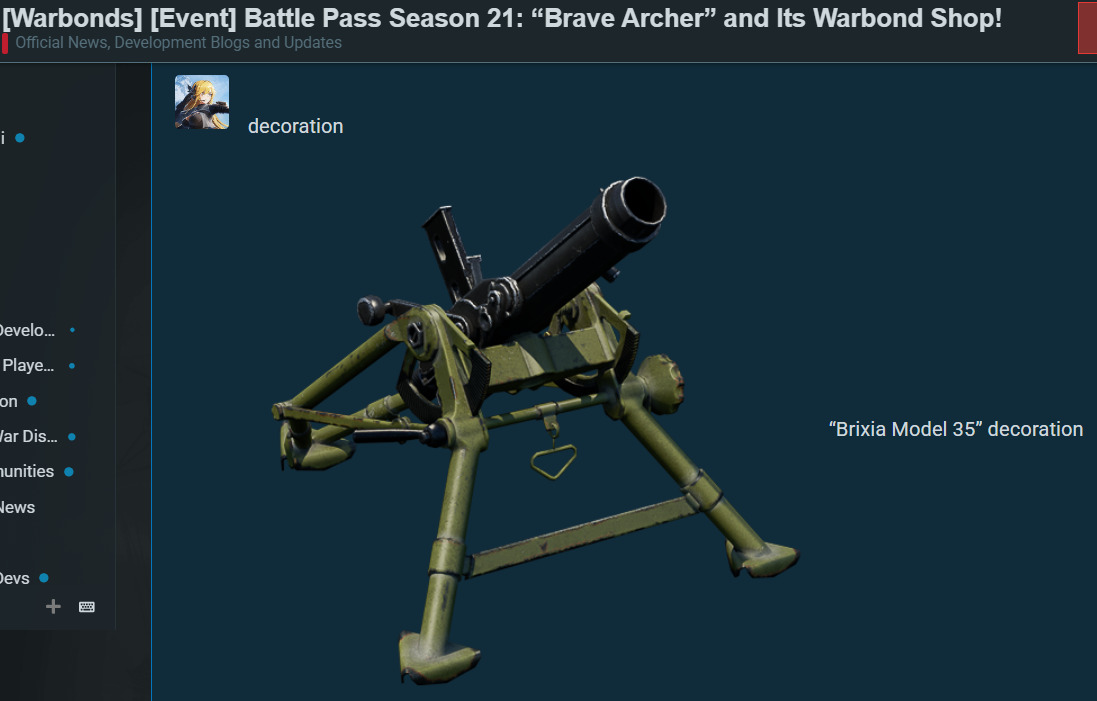- Yes
- Maybe
- No

History.
In 1940, shortly after the outbreak of World War II, a front opened in North Afirca between Italian units and British units supported by Commonwealth units. The front was at first firm and there was relatively little movement, at least until the summer of that year, which led to a retreat of the Italians and a fossilization of the front until the arrival of the Afrikakorps in 1941.
At a time unspecified and unknown to most (probably before Operation Compass), there was an interesting stunt devised by some Italian tankers. At the LXIth L Tank Battalion (a unit under the 60th Infantry Division “Sabratha”) the tank men there attempted to increase the firepower of their L3/35 tanks. Having availability of Brixia Model 1935 assault mortars (successfully tested during the war in Ethiopia and Spain), it was decided to mount some of them on top of the tanks on circumstance shafts. The idea was implemented in at least two vehicles, and shortly after (or at the same time) the tank crews of the XXI L Tank Battalion (under the 62nd Infantry Division “Marmarica”) had the same idea and implemented it, however, mounting the mortar in a slightly more rearward position than that used by their colleagues in the LXIth Battalion. By doing so, the vehicle gained modest firepower, which was well compensated for by the fact that the vehicle gained very little weight and was not slowed down by it.
Unfortunately, the end of the upgraded tanks is unknown and uncertain, although the vehicles were probably destroyed in the fighting against the overpowering British troops.
The Brixia Modello 1935 assault mortar.
The Brixia Model 1935 assault mortar was the most widely used Italian bomb-throwing mortar of World War II. The weapon was born as a necessity to equip troops with direct support in short ranges where artillery could not operate, and was also made noting that the grenade launcher trombones developed until then were too complex.
In 1935 the mortar known then simply as “Brixia” was born, and was produced by Metallurgica Bresciana formerly Tempini. The weapon saw its first use in the Ethiopian War of 1935, and was later used by Italian troops during the Spanish Civil War and during World War II on all fronts where Italians fought.
After the war ended, the weapon remained in service until the early 1950s when it was replaced by more powerful and high-performance weapons of American origin.
Specifications.
Spoiler
Weight: 16 kg
Gauge: 45 mm
Maximum range: 500 m (valve closed)
Minimum range: 100 m
Available ammunition: HE, AF (smoke)
Ammunition weight: ~480 g
Maximum rate of fire: 25 rpm
Pictures and drawnings.
Sources.
Spoiler
Brixia Mod. 35 - Wikipedia
http://www.regioesercito.it/armi/mort_brixia.htm
L3 - NamuWiki
“Gli autoveicoli da combattimento dell’esercito italiano Volume II Tomo II”
Brixia modello 35 - 39
Italian 45-mm Mortar, WWII Tactical and Technical Trends, No. 21: March 25, 1943 (Lone Sentry)
60º Battaglione carri "M.O. Locatelli" - Wikipedia
Brixia Model 35 - Wikipedia







